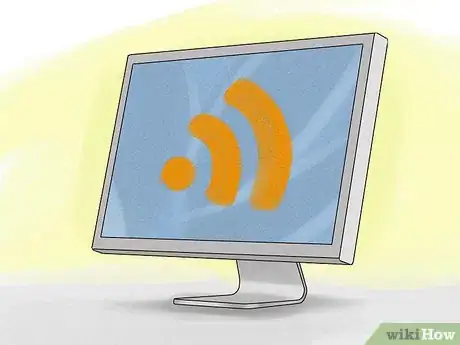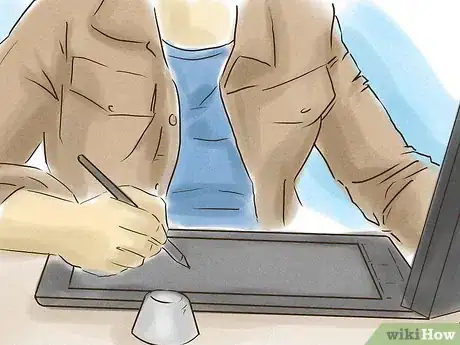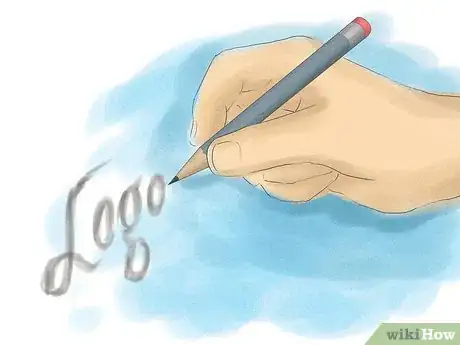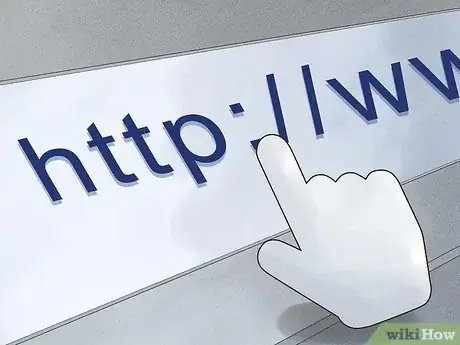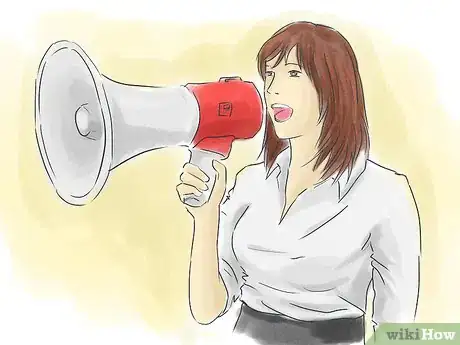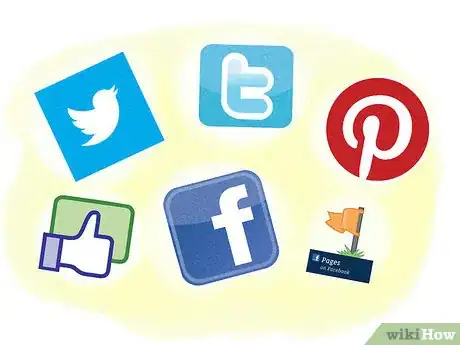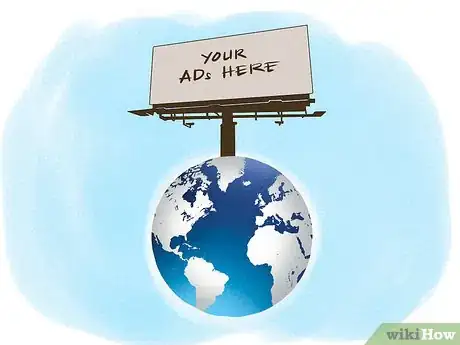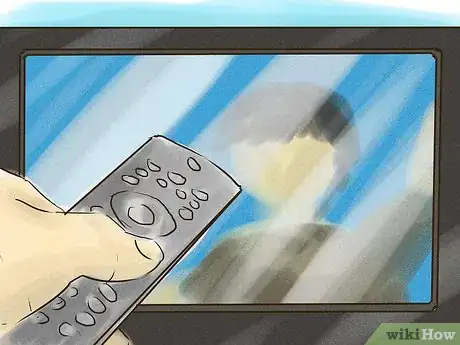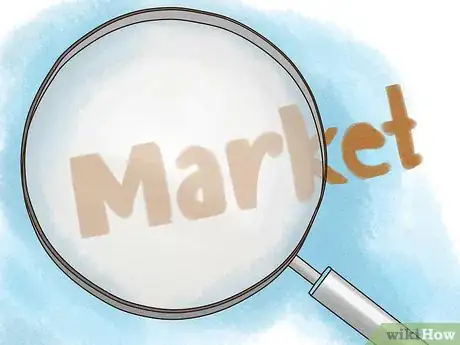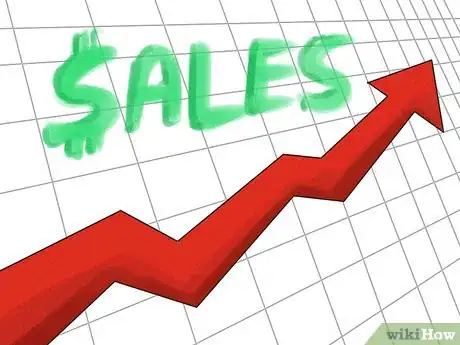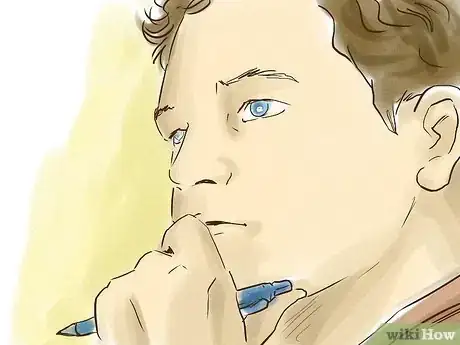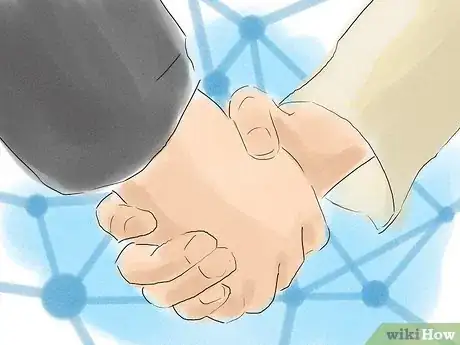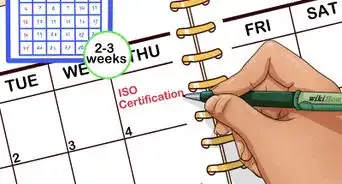This article was co-authored by Emily Hickey, MS. Emily Hickey is the Founder of Chief Detective, a social media growth agency that helps some of the world’s top retailers and start-ups scale their Facebook and Instagram advertising. She has worked as a growth expert for over 20 years and received her Master’s from the Stanford Graduate School of Business in 2006.
There are 9 references cited in this article, which can be found at the bottom of the page.
wikiHow marks an article as reader-approved once it receives enough positive feedback. This article received 23 testimonials and 82% of readers who voted found it helpful, earning it our reader-approved status.
This article has been viewed 412,376 times.
You want to get your product out there so everyone can see how great it is...but that's harder than it sounds! How do you market a product? Read below for some advice, strategies, and general information on how to market a product.
Steps
Designing Your Brand
-
1Keep it up-to-date. Make sure all of your designs are kept up to date. Who wants to go to a beauty parlor with a sign from the 1980s or buy from a website which looks like it's hosted on GeoCities?
-
2Hire a graphic designer. Don't make your product packaging and logo yourself unless you have extensive design experience and artistic talent. Having attractive branding and graphic design is important and is best left to the pros. Commission a graphic designer (you can find a cheap one by inquiring at the local art college) to do your designs for you.[1]EXPERT TIPEmily Hickey is the Founder of Chief Detective, a social media growth agency that helps some of the world’s top retailers and start-ups scale their Facebook and Instagram advertising. She has worked as a growth expert for over 20 years and received her Master’s from the Stanford Graduate School of Business in 2006.Marketing Consultant & Master's Degree, Business, Stanford University

 Emily Hickey, MS
Emily Hickey, MS
Marketing Consultant & Master's Degree, Business, Stanford UniversityDon't ignore your creative campaign. Emily Hickey, the founder of a social media growth agency, says: "The creative part of your ad is actually arguably the most important piece of the entire ad system. That includes everything from copywriting to images, videos, text overlay, and the landing page. Put it all out there, then learn from what works and what doesn't."
Advertisement -
3Design a logo. You will need a logo for your company and product if you do not have one already. Make sure it is easy to read, simple to print, easily memorable, and versatile. Your graphic designer should be able to help you come up with something.[2]
- The most successful logos use bold lines and dynamic shapes. Think the Pepsi logo, the Nike logo, or the Batman symbol.
-
4Design unforgettable product packaging. You will need labels and other visuals on your packaging and these should be similarly well designed as your logo. The packaging will need to be attractive, appropriate to your product and company image, and easily recognizable.
- Remember: if someone can't remember what you're product is called when they describe it to people, they're probably going to say something like, "Go to the blank aisle and you'll see it on the shelf: it's the thing in the purple package with the cool, white swirly design".
Reaching Your Market
-
1Have a website. The most important thing these days, when it comes to marketing a product, is having a website. This will give you a wider audience than any other type of marketing, is relatively cheap, and lends legitimacy to your business. It will also be necessary for some of the more effective marketing methods. If you really want your website to help you succeed, enable the sale of your product through the site.
- The simplest way to sell your product through your website will be to have an Amazon store where the product is available and use the storefront widget or link to the product on your site.
- A sales funnel is also an effective way of converting site visits to actual sales. It's like a step by step process to guide your customers on what products they should buy from among your collections. If you're not sure how this goes, you can hire a professional digital marketer to do the work for you.
-
2Make a press release. For certain types of products, a press release might be a good idea. Find a media which is related to (i.e. whose audience would be excited about) the type of product you are selling and give them a press release about your product becoming available. This is best for brand new products, especially those which are innovative in some way.[3]
-
3Maximize social media. Social media is a powerful marketing tool. You can use your own contacts to spread the word about your product (across Twitter, Facebook, or even sites like Pinterest) or you can use social media's internal advertising (such as Facebook ads and sponsored posts).[4]
- Most products can easily benefit from a Facebook page or Facebook ads. It is a very versatile marketing tool. Make a business page or a fanpage for your product. From there you can have promotions or place ads using Facebook's internal systems.
- Twitter is also a versatile advertising tool. Use it to alert your customers to sales and business developments (now you can buy Cool Product at your local Awesome Store!). Try to mix it up by also posting cool things that are only slightly related to your business, to keep your feed interesting to people.
- Certain types of products can make use of a Pinterest marketing campaign. Maybe you make clothes and you can show how to make great outfits using your product, or how to modify and personalize your product. Maybe you make a food product and you can show recipes that make use of your product.
-
4Use internet ads. Another great marketing tool is internet banner ads. These ads, which would go up on websites which meet your audience criteria and budget, can funnel traffic into your website, allowing you to tell potential customers all about the wonders of your product.
- Use a reliable service to set up internet advertising (such as Project Wonderful) or work out a deal with local website owners if your product is better for a local audience.
-
5Be smart about email marketing. If you have a website, consider an email marketing campaign. Send a well-crafted email telling these people why they should purchase your product, where they can get it, and give them a great hook (such as a sale) to draw them in. Remember: don't be spammy![5]
- Collect the emails of customers during sales of either new or old products, purchase emails from a reputable service, or target specifically to interested parties who might be able to get the word out if they enjoy your product.
-
6Utilize digital coupons. People love to feel like they're getting a great deal on something. Use digital coupons to draw customers in. You can use codes, print-out coupons for customers to bring to your store, or digital QR codes which can be displayed on a phone and scanned.[6]
-
7Don't forget flyers, pamphlets, and postcards. You can also use more traditional methods of getting the word out. These methods work best for advertising and gaining customers in your local area. Make sure that your ad is easy to understand, looks attractive, and has some kind of hook to draw customers in. Flyers and pamphlets can be handed out or posted in allocated spots (such as store windows). Pamphlets and postcards can be mailed to street addresses in your local area.
-
8Use print advertising. You can also advertise in local print media. Get your ad in a newspaper, magazine, or other print media like phone books and real estate guides. This is easy to do, as you need only contact the advertising department for the companies which produce your chosen publication.
-
9Consider television ads. If you have a large amount of money to produce a good television ad and get it to play on local television, this can be a good way to advertise to a broad audience. Unless you have very large amounts of money, however, you will probably be limited to local channels or daytime television, so only use this method if you think your ad will reach people who would actually buy your product.
Expanding Your Business
-
1Become an expert in your market. Conduct research about your target market. You can look up information online or at a library, or you can conduct your own experiments by polling members of your target market or giving them samples to try to review.[7]
- Make sure to consider what your target market should be. Certain demographics to consider include age, gender, education level, location, interests, ethnicity, and sexual orientation.
-
2Perfect your product for the market. Once you have some feedback about your product and more information about your target market, make any changes that seem appropriate to perfect it for your market.
- Remember that while you will get widely differing opinions, if there are common criticisms of your product, they are probably correct and should be addressed.
-
3Determine your startup budget. Think about how much money you will have to market your product in the beginning. This will determine what type of marketing you do and sometimes what strategy you use.
-
4Develop sales goals. You will need to determine how much of your product at what price will need to sell in order to keep your business afloat. This is very, very important. Balancing this will be tricky and it may take some time to figure out the right formula.
-
5Develop a sales plan. This is when you will need to write out and specify your sales timeline, target market needs, priorities, objectives, challenges, how you will acquire new business, and how you will grow your existing business. A sales plan will be necessary if you want investors to consider your product.
-
6Choose a strategy to succeed. There are a number of different ways you can market your product, or different approaches in who you market to and what aspect of people you appeal to in your marketing. These strategies can bring you widely different customers or they can help you soar with a specific set of people.[8]
- Consider a concentrated marketing strategy. This is when your marketing appeals to and is targeted at only your target market. This is commonly seen with luxury items, which get marketed to very specific parts of a population, but can also be seen in other areas as well. Think Teen Magazine.
- Consider an undifferentiated marketing strategy. This is when your marketing appeals to and is targeted at pretty much everybody, and certainly a very broad audience. This strategy works well when you have a product which is broadly useful or appealing. Usually this means the traditional marketing mediums: television ads, print ads, and billboards for example.
- Consider a differentiated marketing strategy. This is when your marketing takes different aspects of your product and markets it to different demographics. Use the price, for example, to market to customers with a limited budget who may be looking for something less costly than your competitor's products. Meanwhile, use convenience to make your product appeal to a local market.
-
7Seed your market. Give samples, trials, or introductory sales to show your customer base why they want your product. You can do this by handing out samples outside your store, or finding a complementary business with whom your product can be paired with for short run, among a number of other ways. This will help build your initial business base and is very important.
- Continue to test your marketing strategy as you go through this initial phase, to ensure that you are taking the right approach for your market.
-
8Expand your market. Once you've had a certain measure of success and you feel your product is ready, you can expand your market by getting your product into major retailers. You will want to consider where you should sell (Walmart, etc.). Following the advice in the Serious Success section will be very important, as stores will not want to carry your product if they feel you are unprepared to handle the volume.[9]
Community Q&A
-
QuestionHow do I get feedback from customers?
 Community AnswerAdd a feedback form to your website. Send a thank you email with a link to a survey form. Often, vendors through whom you sell will have a rating or review section in place.
Community AnswerAdd a feedback form to your website. Send a thank you email with a link to a survey form. Often, vendors through whom you sell will have a rating or review section in place. -
QuestionWhat are some ways to increase your business sales?
 Community AnswerClarify your mission. Break the mission into specific goals. Sell to customer needs. Create and maintain favorable attention. Sell on purpose.
Community AnswerClarify your mission. Break the mission into specific goals. Sell to customer needs. Create and maintain favorable attention. Sell on purpose. -
QuestionHow can I market my bakery products?
 Community AnswerStart by advertising online via social media - make sure to include lots of pictures of your goodies! Then, move to print marketing. Make signs and put them up around your neighborhood, town, or office advertising what you sell and how much it is.
Community AnswerStart by advertising online via social media - make sure to include lots of pictures of your goodies! Then, move to print marketing. Make signs and put them up around your neighborhood, town, or office advertising what you sell and how much it is.
Warnings
- Don't get too enamoured with your own ideas. Your customers may have better ones and if you can't change to fit their ideas, your business will fail. Just look at Microsoft with the Xbox One.⧼thumbs_response⧽
References
- ↑ https://www.business2community.com/branding/6-reasons-graphic-design-important-business-think-0928602
- ↑ http://fortune.com/2017/06/16/business-logos-evolution-importance/
- ↑ https://blog.hubspot.com/blog/tabid/6307/bid/34024/when-press-releases-do-and-don-t-help-your-marketing.aspx
- ↑ https://www.forbes.com/sites/jaysondemers/2014/08/11/the-top-10-benefits-of-social-media-marketing/
- ↑ https://optinmonster.com/is-email-marketing-dead-heres-what-the-statistics-show/
- ↑ https://www.entrepreneur.com/article/223217
- ↑ https://medium.com/@BizzBeeSolution/5-reasons-why-market-research-is-crucial-for-your-business-a27b77fa8264
- ↑ https://courses.lumenlearning.com/wm-retailmanagement/chapter/differentiated-mass-and-concentrated-marketing-strategies/
- ↑ http://www.entrepreneur.com/article/179084
About This Article
To market a product, start by making a website to sell your product on if you haven't already, which will give you access to a wider customer base. Once you have a website, start promoting your product through online ads and social media posts. Always include a link back to your website so people know where to buy your product. To attract more customers, create coupon codes that readers can enter on your website to receive a discount. For tips on designing your brand so your product is more marketable, keep reading!
